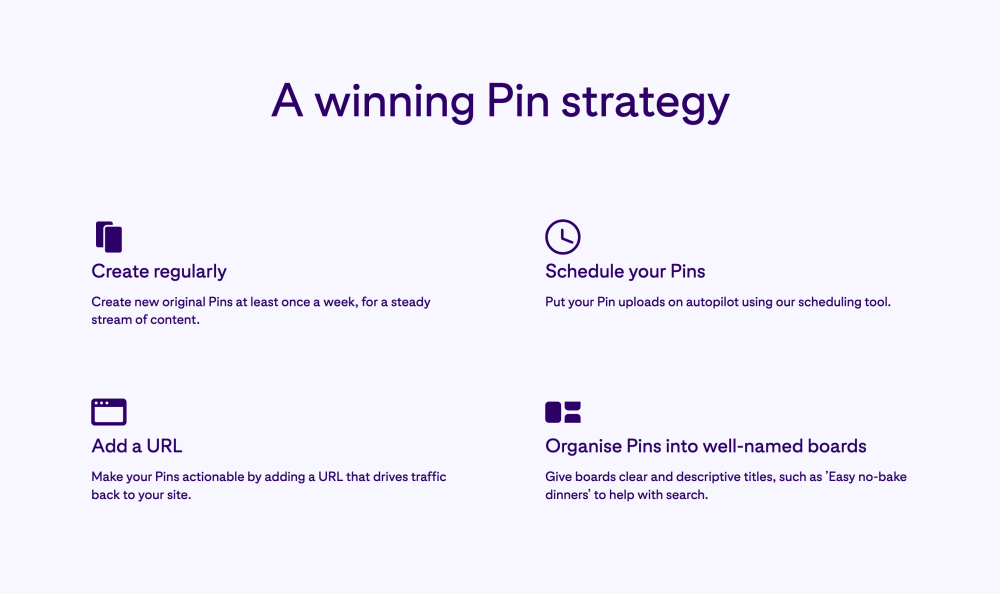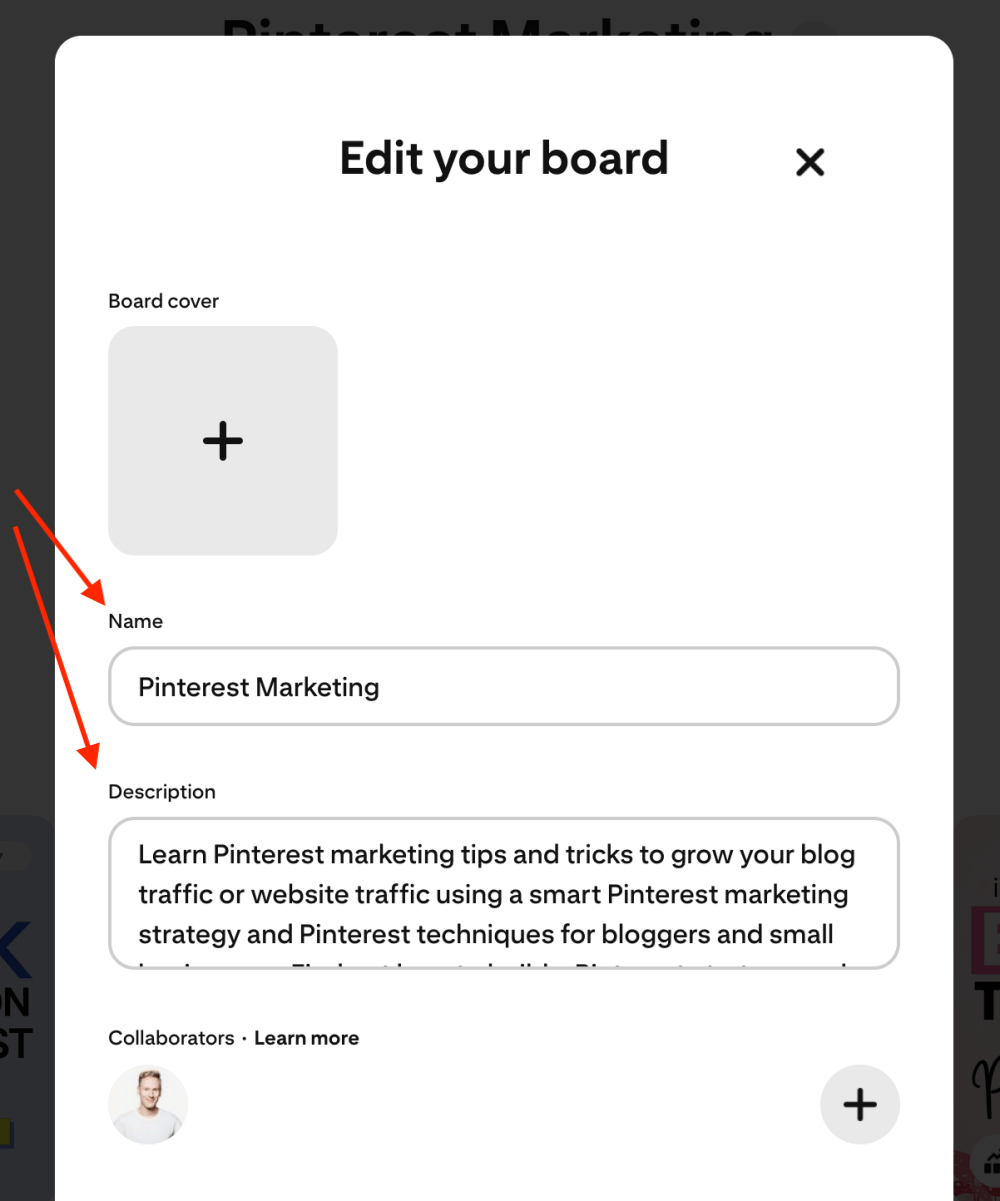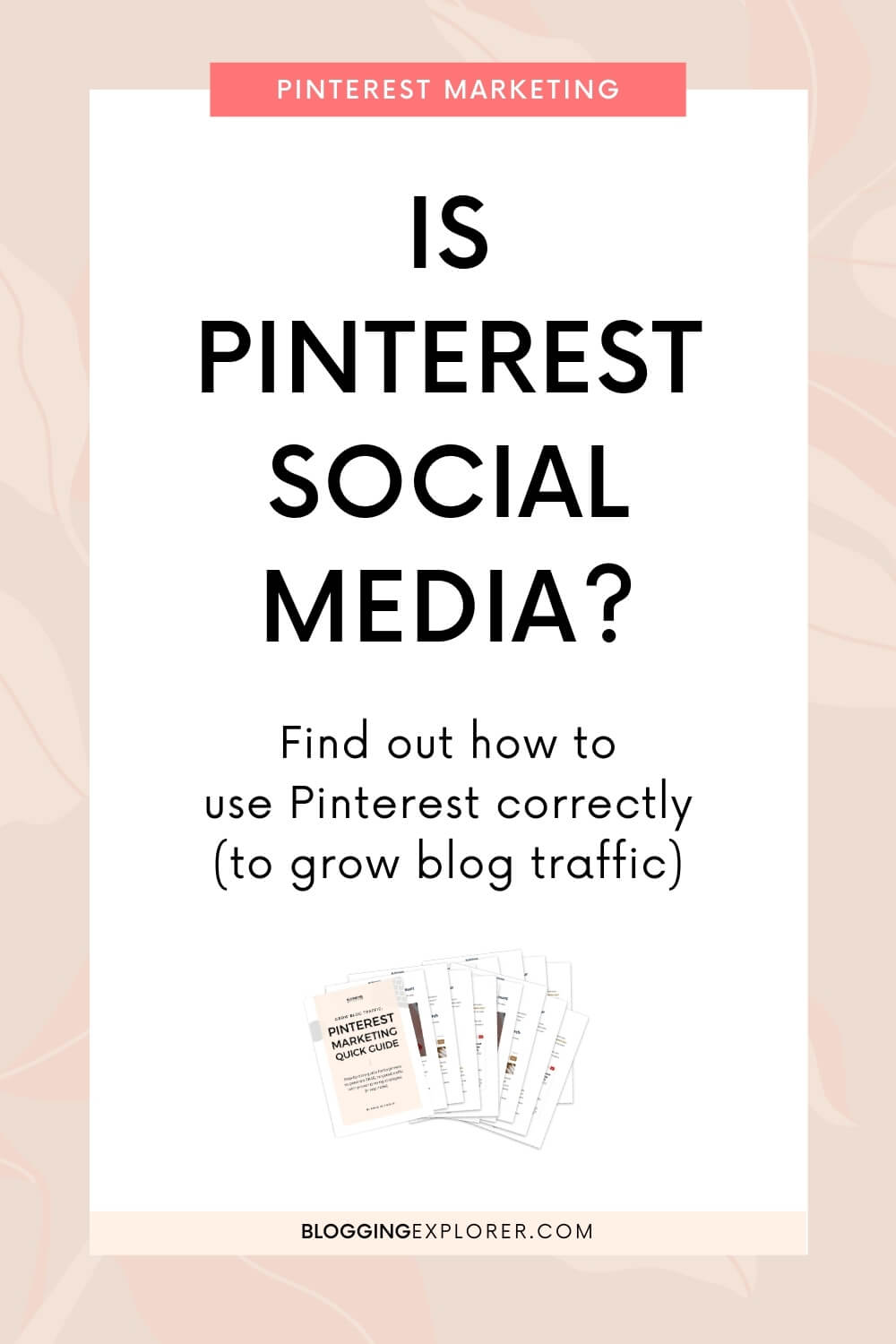Is Pinterest social media? How can you use Pinterest to grow your blog and website traffic in 2024?
Are you wondering how you can drive more traffic to your content? We all know more traffic means better blog monetization opportunities. But what is the best way to use Pinterest for traffic growth these days?
If you want to master Pinterest and use it the right way, you are in the right place.
Today I’ll tackle a question I hear every day:
Is Pinterest a social network?
And although the answer may seem obvious, it’s important to be mindful of how Pinterest works before you start using it to boost your blog traffic.
To help you out, I’ll walk you through a few key points about how Pinterest works, whether it’s social media, and how you should use it to drive traffic to your website.
By the time you finish reading this article, you will know a handful of easy, smart Pinterest traffic techniques to use every day. You will feel more confident in your Pinterest strategy knowing that you aren’t wasting your valuable time doing things that don’t work.
Let’s dive right in!
Here are a few related articles for you:
- 7 Deadly Pinterest Mistakes: Are You Still Making Them?
- How I make $3,700/Month Blogging: Start a Profitable Blog Now (The Easy Way)
What is Pinterest?
Let’s start with the very basics of how Pinterest works.
In short, Pinterest is a place to find information about and inspiration for anything you can imagine. It is a visual bookmarking tool where you can search and save new, creative ideas.

Each idea you bookmark is called a pin, and you can save them for later so it’s easy to find when you need it.
You use Pinterest boards to collect pins for specific topics such as “cookie recipes” or “urban gardening tips”.
Boards are an easy way to:
- Organize your thoughts
- Collect inspiration for an upcoming event
- Aggregate ideas you want to try
- Group together links to your favorite resources
You can find your Pinterest boards on the Saved tab on your profile page:

Moreover, each pin can include a link to a specific URL, so you can always go back to the source for more information or to revisit an article you love.
Thus, if you want to drive traffic to your blog or website, you can create pins for any amount of URLs and point users to specific pieces of content.
And what makes Pinterest so powerful is that it’s 100% visual.
Well-designed pins can grab a user’s attention much faster than plain text. If they like the image, they read the text description for more details.
The best part?
Pinterest is 100% free to use. If you understand how it works, you can easily increase your blog traffic with just a few essential Pinterest marketing strategies in no time.
Now that you’re familiar with the fundamentals, let’s see what social network characteristics you can find on Pinterest next.
Save this post to Pinterest and share it with others! Thank you!
Is Pinterest a social network?
Ever since its launch in 2010, Pinterest has focused on a basic pattern of social networks, where you:
- Follow other users
- See their pins in your home feed
- Click, like, and save those pins
When your pins are saved and clicked by your followers, Pinterest starts distributing them to a wider audience. The more users engage with your content, the more traction you gain on the platform.
But is Pinterest social media?
To find an answer to our question, let’s look at two essential social aspects of Pinterest:
1: Following others
When you search and find new ideas on Pinterest, you can follow the account where the content originated from.
By following an account, you will start seeing more of their pins in your Home feed.
In that sense, Pinterest is like a social network where you can follow others to see their content. However, followers don’t play such a big role as on Twitter or Instagram, for example.
While bigger accounts can get more exposure on Pinterest, what matters the most is their content.
Because the thing is:
The only way to gain traction on the platform is to help your target audience. After all, they are using Pinterest to search and find helpful content, right? Thus, they need to see the value you deliver before they start following you.
In short: Instead of accumulating followers for the fun of it, Pinterest is based on valuable, helpful content.
2: Liking, saving, and commenting on pins
When you publish a new pin, you want it to be seen by as many users as possible.
And since Pinterest shows new content to people based on their interests, your content will first be seen by users who are interested in your topic.
Then, the more people interact with your pin, the more eyeballs will see it.
This whole process of seeing and interacting with pins has a few social aspects, too. Pinterest users can:
- Like your pins
- Comment on them
- Save them to boards
Just like when you share a photo on Instagram, you’re thrilled to see those likes pouring in. Or when you write a status update on Facebook, your friends can comment on it.
But Pinterest is different:
You share pins because you want people to save them for later. This is the biggest difference to social networks. Let’s have a look:
How Pinterest is different from social media
When Pinterest went public in 2019, they said they would rather now be seen as a place like Facebook or Twitter.
In their S-1 to the Securities Exchange Commission, Pinterest stated that they want to be a platform where users can “discover ideas for just about anything you can imagine”.
Also, they said:
“Visualizing the future helps bring it to life. In this way, Pinterest is unique.”
Because the thing is:
Twitter, Facebook, and Instagram are all focused on the present moment.
Anything you post now has a lifespan of a few hours or a few days, tops. Hence, you need to stay active and post daily to generate visibility.
And this is where Pinterest couldn’t be further from social networks:
Pinners are planners!
Users save pins for the future instead of aimlessly liking and commenting on posts and photos they see in their feed. Also, they organize and group those pins together with other similar ones on their boards.
This means that a pin you share today can generate traffic for months or even years to come.
Thus, instead of being a social network, Pinterest is a search engine.
And while it has a few social features to spice things up, it is essentially a place to search and find helpful information.
Key takeaway: Pinterest is a search engine
Pinterest is so much more than social media. It is one of the largest, fastest-growing, and most popular search engines on the Web.
Now, what does this mean for your Pinterest marketing strategy?
Before you start using Pinterest to grow your blog traffic, you need to get into the right mindset.
All search engines have the same goal:
They want to help their users find the content they are looking for.
Under the hood, they use complex algorithms to sort and rank web pages and content to fit specific search queries and phrases.
Although we will never know how ranking algorithms work exactly, we can still make sure our content is optimized for search engines with a few key Pinterest SEO techniques.
Even if you are new to Pinterest and SEO, you can easily learn the basics and share your content the right way to grow your blog traffic fast.
That said, here are three key points about Pinterest SEO you should understand:
1: Pinterest runs on content
Whereas Google crawls the web constantly to find new and updated content, Pinterest doesn’t actively search for new content on the Web.
Instead, Pinterest relies on content creators to share their blog posts and web pages on the platform.
Thus, if no one publishes new pins, Pinterest would quickly run out of content in its search engine.
Therefore, to keep things going, Pinterest encourages and helps content creators much more than Google does.
The easiest way to make sure your content is shown to a large audience is to publish new content on Pinterest regularly. This sends a positive signal to Pinterest, making their search engine see you as a content creator instead of a content consumer.
If you can, post a fresh pin every day. If you don’t have enough time for that, simply pick a schedule you can commit to.
Check out these Pinterest content tips to make sure your pins stand out and drive traffic to your website.

2: Know what your target audience wants
Next, make sure you create content that is in high demand. You want to understand what your target audience wants to see and read.
How can you make their lives easier?
When you know what problems and questions they have, you can easily produce and share the right solutions and answers for them.
Follow my article on how to find your target audience to get started.
3: Make your pins stand out
Since Pinterest is 100% focused on visual content, you want to make sure your pins stand out in the feed.
To make sure your content gets plenty of saves and clicks, here are a few key best practices you should follow:
- Create stunning pin images:
Use high-quality images with a 2:3 aspect ratio (width to height). Pinterest recommends an image size of 1000 x 1500 pixels. - Use text overlays:
Make your pins stand out by using text overlays where you highlight the core message and benefit of your blog post or web page. - Add your logo:
Put your logo on every pin you publish, but keep it subtle. - Use relevant images and graphics:
If you can, user photos that are related to your blog or website topic and niche. Check out Unsplash or Pexels for free, high-quality stock photos, for example. - Keep your design simple:
Streamlined, simplistic design performs better than cluttered text and images.

4: Give your content tons of context
Just like Google, Pinterest uses keywords and search phrases to determine what your content is about.
If your pins are about vegan cake recipes, you need do help Pinterest understand that context. That’s the only way to make sure your content is shown to people who type in “vegan cake recipes” in the built-in search bar on Pinterest.
Hence, when you publish a new pin, you need to give it as much context as possible.
Everything about your pin needs to ooze tips and clues for Pinterest to understand what your pin is about.
Here are four key tips to add context to your pins:
- Pin design:
Use a relevant image with a benefit-driven text overlay. - Pin title:
Add a clear pin title with your most relevant keyword. - Pin description:
Write a pin description to help users learn more about your content. - Board title and description:
Publish your pin to the most relevant board first.

Final thoughts: Is Pinterest social media?
By now we know that Pinterest is much more than social media. It’s a powerful visual search engine people use to gather and organize ideas and inspiration for the future.
Although there are a few social aspects on the platform, you need to get into the right mindset before you start using Pinterest to grow your blog or website traffic.
If you use Pinterest just like Twitter, Facebook, or Instagram, you won’t see the results you are looking for. Ultimately, it will just be a waste of your time.
Thus, before you start sharing your content on Pinterest, make sure you understand how people behave on the platform and what they are searching for.
Start by reading my Pinterest keyword guide to find the right keywords to use. Then, follow my proven Pinterest marketing strategy to explore your blog or website traffic with a few powerful but simple techniques that really work.
But now I want to hear from you! Are you using Pinterest to grow your blog traffic? How’s your experience been so far?
Have you run into any difficulties? What’s been your biggest struggle with Pinterest thus far? Share your thoughts in the comments below!
Here are a few related articles you may want to read, too:
- Idea Pins Guide: How to Use Idea Pins to Grow Your Blog Traffic
- 4 Profitable Blogging Investments to Save Time and Make Money Online
If you liked this post about is Pinterest social media, please share this article with others!


